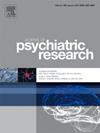Reward processing in young people with self-harm behaviour
IF 3.2
2区 医学
Q1 PSYCHIATRY
引用次数: 0
Abstract
Twenty percent of young people report a lifetime presence of self-harm (SH) behaviour, associated with negative health and functional outcomes. Understanding the underlying cognitive mechanisms is needed to develop targeted early interventions. Reward processing biases may underlie SH, aligning with accounts of the behaviour acquiring “addictive” characteristics. However, the specific nature of such biases remains unclear, particularly its relationship with negative affect (NA) that frequently triggers SH. In Study 1, we compared young people (aged 16–25) with SH to a group with NA but no SH history and a healthy control group on performance of a novel Incentive Delay Task (IDT), with SH-related (SH trials), positive social (social trials) or monetary images (money trials) as stimuli. In Study 2, a different sample of SH and HC participants completed the same IDT following NA induction via an online Trier Social Stress Test. For both studies, we hypothesised faster and more correct responses in the SH group than control groups on SH trials. Contradicting our hypothesis, there were no significant between-group differences in IDT performance on SH, social and money trials in either study. Certain SH characteristics (positive reinforcement, SH mental imagery, urge) were significantly correlated with better performance on SH trials in SH participants. Thus, broadly SH behaviour may not be underpinned by motivational biases towards SH-related cues or naturalistic rewards. Future studies should clarify whether incentivisation of SH-related cues instead explains individual differences in SH behaviour and its relation with treatment and prognosis.
有自残行为的青少年的奖赏处理。
据报告,20% 的青少年一生中都有自我伤害(SH)行为,这种行为与负面的健康和功能结果相关。要制定有针对性的早期干预措施,就必须了解其背后的认知机制。奖励加工偏差可能是自残行为的基础,这与自残行为具有 "成瘾 "特征的说法一致。然而,这种偏差的具体性质仍不清楚,尤其是它与经常引发SH的消极情绪(NA)之间的关系。在研究1中,我们比较了患有SH的年轻人(16-25岁)与患有NA但无SH病史的群体以及健康对照组在新颖的激励延迟任务(IDT)中的表现,该任务以SH相关(SH试验)、积极社交(社交试验)或金钱图像(金钱试验)作为刺激。在研究 2 中,不同样本的 SH 和 HC 参与者在通过在线特里尔社交压力测试进行 NA 诱导后,完成了相同的 IDT。在这两项研究中,我们假设在SH试验中,SH组比对照组的反应更快、更正确。与我们的假设相反,在这两项研究中,IDT 在 SH 试验、社交试验和金钱试验中的表现没有明显的组间差异。某些SH特征(积极强化、SH心理想象、冲动)与SH参与者在SH试验中的更好表现有明显的相关性。因此,广泛的SH行为可能并不是由对SH相关线索或自然奖励的动机偏差支撑的。未来的研究应阐明,SH相关线索的激励是否能解释SH行为的个体差异及其与治疗和预后的关系。
本文章由计算机程序翻译,如有差异,请以英文原文为准。
求助全文
约1分钟内获得全文
求助全文
来源期刊

Journal of psychiatric research
医学-精神病学
CiteScore
7.30
自引率
2.10%
发文量
622
审稿时长
130 days
期刊介绍:
Founded in 1961 to report on the latest work in psychiatry and cognate disciplines, the Journal of Psychiatric Research is dedicated to innovative and timely studies of four important areas of research:
(1) clinical studies of all disciplines relating to psychiatric illness, as well as normal human behaviour, including biochemical, physiological, genetic, environmental, social, psychological and epidemiological factors;
(2) basic studies pertaining to psychiatry in such fields as neuropsychopharmacology, neuroendocrinology, electrophysiology, genetics, experimental psychology and epidemiology;
(3) the growing application of clinical laboratory techniques in psychiatry, including imagery and spectroscopy of the brain, molecular biology and computer sciences;
 求助内容:
求助内容: 应助结果提醒方式:
应助结果提醒方式:


